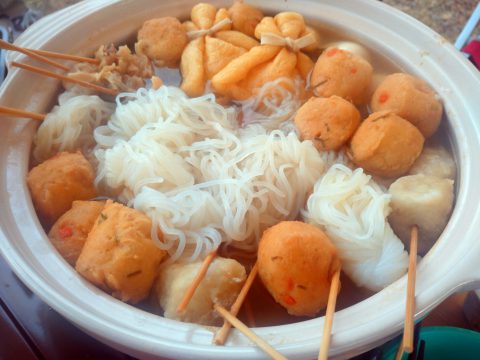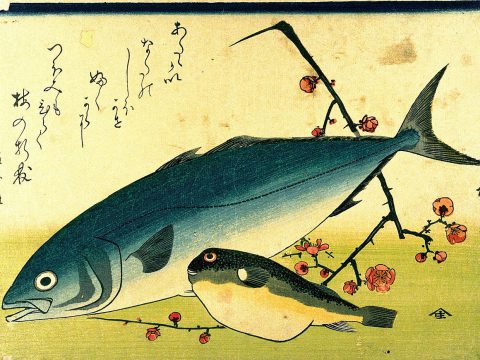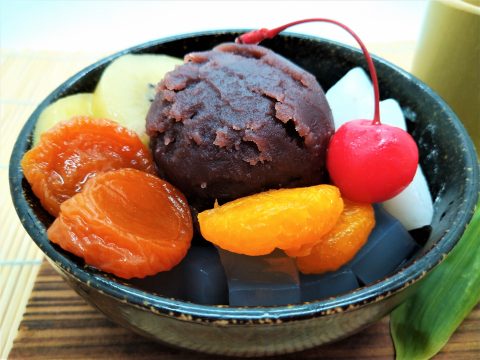Japanese Citrus Fruits
JAPANESE FOODS
02.05.2022
Did you know that Japan is famous for its citrus fruits? You may see a wide variety at your supermarket or farmer’s market, ranging in size, color, and taste. Some types are found across the country, and some are local. Some are eaten as is, and some are incorporated into local cuisine and specialties.
Let’s look at the different Japanese citrus fruits.
Mikan (みかん)
Also known as tangerines, satsuma mandarin, and unshu mikan, it is seedless oranges with thin skin. Its origin is unknown; some theories claim it came from China, others say it came from the Satsuma region (southern Japan).
There are many varieties and brands of mikan. Some mikan are tart or sweet, whereas others are balanced in both. Some are bright orange, and some have a green tint. The prefectures famous for their mikan are Ehime and Shizuoka, although it’s grown in many other parts of Japan.

Shiranui (不知火)
Shiranui is a seedless and sweet mikan that features a large protruding bump on the top of the fruit. It’s a hybrid varietal and was developed in 1972. It’s been successfully grown outside of Japan and goes by the name “Sumo Citrus” in the U.S.

Amanatsu/Natsu mikan (甘夏・夏蜜柑)
The fruit is oblong-shaped and the size of a grapefruit. The skin is orange-yellow and tastes sweet and sour. It’s believed to be a hybrid of a pomelo and sour orange. The name means “sweet summer” and is available from the late spring to early summer.
Amanatsu was first discovered in Yamaguchi prefecture in 1740 and is now primarily grown in Yamaguchi, Kumamoto, and Ehime.

Yuzu (柚子)
Yuzu has a characteristic bumpy skin, and the color can range from yellow to green, depending on its ripeness. The skin is thick, and the flesh is minimal with lots of seeds. It can range from the size of a golf ball to a small grapefruit.
Yuzu is highly aromatic and floral, and the zest and juice are highly prized in Japanese cuisine. You may find slivers of yuzu peel in clear soups, steamed egg custard, and on noodles. It’s also used to make ponzu (ポン酢), a yuzu juice and soy sauce condiment, and yuzu kosho (柚子胡椒), a spicy chili and yuzu peel paste.

Sudachi (酢橘)
Sudachi is a round green fruit that’s a specialty of Tokushima prefecture. It’s incredibly sour, lime green in color, and with a thin skin. It’s juicy, aromatic, and tart with herbal undertones of cumin, dill, and white pepper.
The juice and zest are used in cooking and as a garnish. You may be served a wedge or slices of sudachi with grilled fish, matsutake, noodles, and hot pot. It’s considered a delicacy outside of Tokushima.

Kabosu (かぼす)
It’s similar in color but much larger than sudachi, it’s round with a distinctive bump at the apex. The skin is smooth and glossy. While it is acidic and tart, it’s less sour and floral than yuzu, and has a slight herbal scent.
Kabosu is also used in a variety of dishes. It’s primarily grown in Oita prefecture.

Shikuwasa (シークワサー)
Shikuwasa is native to Okinawa, the most southern prefecture. The word Shikuwasa roughly translates to “vinegar eating” in the Okinawan language. The fruit is around 3cm in diameter and is dark green when unripe but becomes yellow. It’s rich in vitamin C, vitamin B1, and vitamin E. It also contains nobiletin, a compound that may help reduce lifestyle-related diseases such as diabetes and high blood pressure.
The fruit and juice are used in many Okinawan dishes, alcohol infusions, and snacks.


Kayoko Hirata Paku
Kayoko Hirata Paku is a food writer, translator, and bagel person. Growing up in Japan and the U.S., she currently resides in Tokyo with her peanut butter addicted husband, a very hungry baby, and many half-dead plants.
Read previous articles by the writer
Read latest articles
KEYWORDS
- # PICKPICK
- # Resume
- # alcohol
- # Rice
- # Soup
- # winter food
- # Fast Food
- # seafood
- # spicy foods
- # raw food
- # fermented food
- # Transportation
- # MEAT
- # Edo culture
- # suits
- # clothing
- # drink
- # fish
- # seasoning
- # Japanese New Years Foods
- # Toshikoshi soba
- # Osechi Ryori
- # Ozoni
- # Christmas
- # Japanese fusion pasta
- # Wafu Pasta
- # Japanese Hot Pot
- # なべ
- # 鍋
- # Miyazaki
- # Chicken Nanban
- # Karamen
- # Autumn Wagashi
- # Mushi-yokan
- # Imo-yokan
- # Japanese Autumn Fruits
- # Autumn
- # Vending Machine
- # fall
- # dango
- # Chestnut rice
- # saury
- # Mushroom
- # Rice vinegar
- # Japanese condiments
- # 調味料
- # Sake
- # Mirin
- # Soy sauce
- # Japanese Noodles
- # Udon
- # Ramen
- # Yakisoba
- # Soba
- # Japanese Seaweed
- # 海藻
- # かいそう
- # Payslip
- # Training
- # Japanese summer foods
- # 和菓子
- # Wagashi
- # ryokucha
- # 夏
- # 飲み物
- # Ramune
- # ラムネ
- # Pokari Sweat
- # ポカリスエット
- # Calpis
- # カルピス
- # Mugicha
- # ume
- # 梅
- # うめ
- # umeshu
- # job hunting
- # tofu
- # Recruitment in Japan
- # miso
- # Japanese cuisine
- # Yellowtail and bonito
- # Children’s Day
- # Kashiwa Mochi
- # Chimaki
- # fruits
- # Kusamochi
- # Types of Agriculture in Japan
- # bread
- # パン
- # パン屋さん
- # japanese bread
- # shokupan
- # meal blead
- # anko bread
- # 桜
- # さくら
- # cherry blossom
- # visa
- # hanami
- # omotenashi
- # sakura
- # おもてなし
- # Japanese hospitality
- # oshibori
- # wet hand towel
- # hand towel
- # restaurant
- # Commuting in Japan
- # Women-only cars
- # Exit gate
- # japanese train
- # train
- # valentine
- # Japanese sweets
- # 朝食
- # Japanese Breakfast
- # Breakfast
- # Japanese
- # 日本
- # healthy
- # persimmons
- # hoshigaki
- # HR
- # work in Japan
- # jinji ido
- # corporate systems
- # Japanese work culture
- # bento
- # ekiben
- # shinkansen
- # omiyage
- # train station
- # Japanese culture
- # work culture
- # mentaiko
- # umeboshi
- # Japanese snacks
- # potato chips
- # Japanese potato chips
- # Japanese writing
- # seaweed
- # konbu
- # ocean foods
- # shio konbu
- # dashi
- # miso soup
- # food processing
- # pear
- # nashi
- # sweet potato
- # japanese sweet potato
- # stingray
- # satsuma imo
- # food value chain
- # homecooking
- # agriculture
- # Japanese homecooking
- # farming
- # nikujaga
- # shojin ryori
- # meat and potatoes
- # traditional foods
- # comfort food
- # buddhist food
- # manufacturing
- # factory
- # eihire
- # vegetarian
- # food and beverage
- # izakaya
- # yatai
- # japanese festival
- # taiyaki
- # matsuri
- # summer
- # Ikayaki
- # smart agriculture
- # shaved ice
- # kakigori
- # かき氷
- # summer dessert
- # Japan
- # Japanese foods
- # dessert
- # fruit
- # matcha
- # icecream
- # Pikcup
- # Pikc up
- # Pcikup
- # skilled labor visa
- # working visa japan
- # Dineer Table in Japan
- # Japanese manner
- # Japanese food
- # Japanese Table Manner
- # Chopsticks
- # Japanese traffic signs
- # traffic information
- # road rules in Japan
- # chocolate
- # green tea
- # Osaka
- # Work Japan
- # Japanese company
- # ikura
- # sushi
- # nigiri
- # wasabi
- # PCIK
- # PICK UP
- # PICK
- # PICKUP







